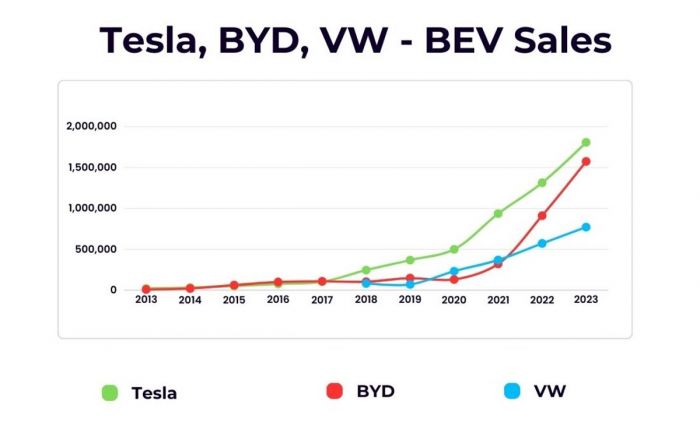Unfortunately, the Ford Fiesta was discontinued for the American market recently and now the cheapest vehicle Ford offers is the EcoSport, the small SUV. But we love the Fiesta and we think it was a really decent vehicle. Even though you can't buy the new Fiesta, you can get a used one and you still may be interested in the technical side of this vehicle.
Today, we'll tell you about the 1.6L naturally aspirated Sigma engine that was installed in the American Fiesta since its debut in 2010 and up to 2019, the final year of sales in the US. Also, these cars were equipped with the 1.0L EcoBoost engine, but the 1.6-liter one was much more efficient and popular among buyers. That's why we'll start with it.

Key features and my opinion about the engine
- Production years:2008-2023
- Average lifespan of 1.6L Sigma:210,000-230,000 miles
- Fuel supply type:port injection
- Power range:108-133 hp
- Fuel efficiency:average
- Engine block material:aluminum
- Engine reliability score:high
- The most common problems:phasers are faulty, ignition issues, electrical problems, oil leaks, minor issues.
What should you know about the 1.6-liter Fiesta Sigma engine?
You shouldn't be tricked by the fact that the American and European Fiestas look the same. First of all, the US buyers preferred sedans while European markets only offered hatchbacks. Secondly, the technical side of these cars is completely different. And the 1.6-liter engine is one of the key differences. The Fiesta ST offered the EcoBoost engine, too.
In Europe, most Fiestas came with smaller engines of 1.0L, 1.25L, 1.4L, or even small diesel engines. Also, European versions were equipped with manual transmissions in most cases while the US buyers preferred the automatic versions. The only trim called "Fiesta S" offered manual transmission and it was mainly bought as a fleet car.
Here's what you should know about the 1.6L engine in the Fiesta:
- this is the simple Sigma-series engine without any turbochargers and with nothing complicated in its construction;
- the most complicated technology is the Ti-VCT or Twin Independent Variable Camshaft Timing which causes no problems at all;
- the power of 120 hp and the torque of 112 lb-ft is kind of good for such a small car, and yes, it really feels great for the Fiesta;
- the majority of these vehicles come equipped with the PowerShift dual-clutch transmission while some come with 5-speed manual trannies;
- the Fiesta offers wonderful gas mileage with about 28 mpg in the city and up to 37 mpg on highways, this is a great result;
- these engines don't cause problems, and they don't contain a lot of modern technologies, but they do what they have to do really well;
- also, the Ford Fiesta 1.6-liter engine is quite silent, doesn't vibrate excessively, and is pleasant to drive in terms of comfort and power.
You may have noticed that we've only told your good things about this engine. And yes, we really like it because it's a simple, economical, long-lasting, and not too problematic unit that drives you wherever you want and doesn't require a lot of attention. This is what a normal engine should be like.
Unfortunately, all these Sigma engines made by Ford still have some common issues that we have to consider. These are not eternal engines and they are not going to work well and long without normal maintenance. We should warn you that the number of problems you will get depends on how well you treat your engine.
How long will the Fiesta 1.6L engine go?
It's an interesting case because the Fiesta will fall apart much sooner than its engine will die. The longevity of the 1.6-liter engine in the Ford Fiesta is about 250,000 miles. But we doubt you'll drive your Ford that long because of other reasons like the dying clutch and TCM in the dual-clutch transmission, the rusty body, the bad interior, etc.
You should understand that the Fiesta is a budget-friendly vehicle. It cost about $11K back in 2011 and started with a $13K price in 2019, so it's hard to expect something wonderful from the model.
We still believe the engine is better than all other parts of this car. If you manage to replace or repair the transmission after 120-150 thousand miles, you should be able to drive the Fiesta for 250K miles or even more. Of course, at such high mileage, it will still show some minor problems and will ask for some money.
What are the common problems with the 1.6L Fiesta engine?
1. Fuel supply problems
Actually, this vehicle has quite a simple injection (not the direct one like in the 2-liter Focus engine). Also, the whole injection system works pretty well and doesn't require any additional maintenance or cleaning. But the fuel pump keeps failing all the time. For optimal work, the 1.6L Sigma engine needs proper fuel pressure. And the pump appears to be too weak to deliver that pressure for a long time.
The fuel pump is going to be one of the most common things you buy at auto part stores or from a dealer. Unfortunately, fuel pumps for Fiestas are not very cheap.
2. Cooling system issues
For proper lifespan, this engine should be cooled properly. If not, the head gasket will be the first to fail. After that, the head may die. Sometimes, repair after bad overheating will cost you more than the purchase of a remanufactured 1.6L engine.
The main problem in the cooling system is the water pump. It's part of the timing system and it's powered by the timing belt. Once it leaks or fails, coolant stops circulating in the cooling system and the engine starts overheating. But you know what? You don't have the temperature gauge in the Fiesta. You will only get a message on the small screen if something goes wrong. And this is a big problem.
3. Timing belt problem
All Fiesta 1.6L engines are equipped with timing belts. It means you will have to replace it together with the water pump, the tensioner, and some bearings. Without this, the belt will just jump off a tooth or even break. This will lead to problems with valves and pistons. Actually, it's cheaper to buy a new engine than to rebuild the old one after this.
On average, the timing belt can survive up to 60,000 miles, but be careful with that. In most cases, timing belts should be replaced every 40K miles to make sure you avoid problems. Don't replace the belt only, always replace it with the pump, pulleys, and tensioners.
4. Spark plugs and coils keep failing
We don't know why but spark plugs and coils will have to be replaced pretty often if you own this vehicle. The 1.6L engine seems to have some electrical issue that destroys the coils and then the plugs die, too. We don't know why exactly this may happen, but the reports clearly state that owners need to buy these things too often.
The good news is that the Fiesta uses pretty simple and cheap spark plugs. Also, OEM coils don't cost a fortune. You may find some aftermarket options that will work well, too.
Should you buy a used Fiesta with a 1.6L engine?
It's hard to give any recommendations because the Fiesta is certainly not the vehicle of your dreams. But it still has some obvious advantages that make it a good idea to buy this car.
Here are some good points:
- it's quite a reliable vehicle with no big problems that are going to happen suddenly;
- the vehicle is pretty fresh, you can buy a young car for little money;
- this is a pretty comfortable small car for cities and short rides;
- the fuel consumption will make you happy about any spending;
- the vehicle doesn't require expensive maintenance.
But still, you should calmly consider all problems and issues you will have with this car. For example, it's a small vehicle and it doesn't suit long interstate rides. Also, the dual-clutch transmission (PowerShift) is not very reliable and it's expensive to repair. One more thing is that the quality of materials in the interior is really poor. Even after 50,000 miles, some parts are just destroyed.
If we talk about the engine, this vehicle is worth its money. The 1.6L engine deserves only good words. Yes, there are some common issues but we can't remember any engine we've already written about that would be without any possible problems.
Final words
We love the Fiesta with the 1.6L Sigma engine under the hood. This is a relatively simple vehicle with no expensive modules and units that is ready to surprise you with its comfort, cargo space, speed, acceleration, and fuel economy. This is a great purchase for a young family or as the first car for a teenager.
But of course, this vehicle has some limitations that you should consider. If we take solely the engine, we love it and have no complaints about it. Ford could only add some temperature gauge, but this is a minor problem you shouldn't concentrate on.
About the authors
The CarAraC research team is composed of seasoned auto mechanics and automotive industry professionals, including individuals with advanced degrees and certifications in their field. Our team members boast prestigious credentials, reflecting their extensive knowledge and skills. These qualifications include: IMI: Institute of the Motor Industry, ASE-Certified Master Automobile Technicians; Coventry University, Graduate of MA in Automotive Journalism; Politecnico di Torino, Italy, MS Automotive Engineering; Ss. Cyril and Methodius University in Skopje, Mechanical University in Skopje; TOC Automotive College; DHA Suffa University, Department of Mechanical Engineering






Add comment